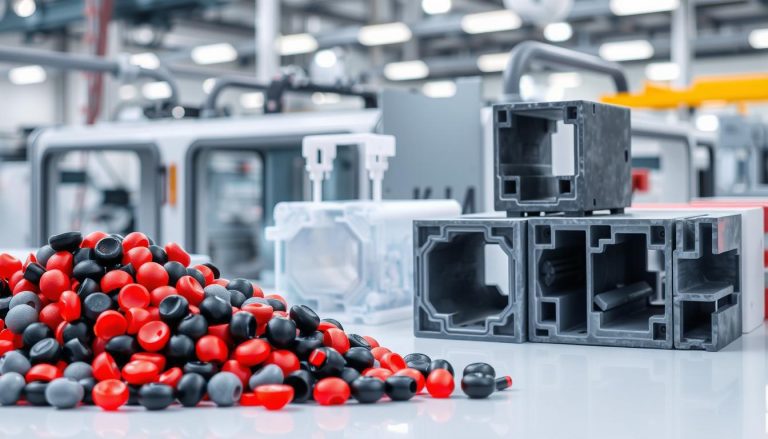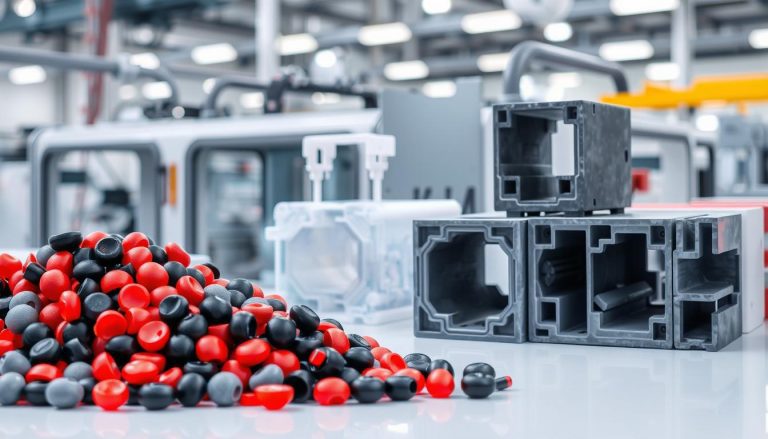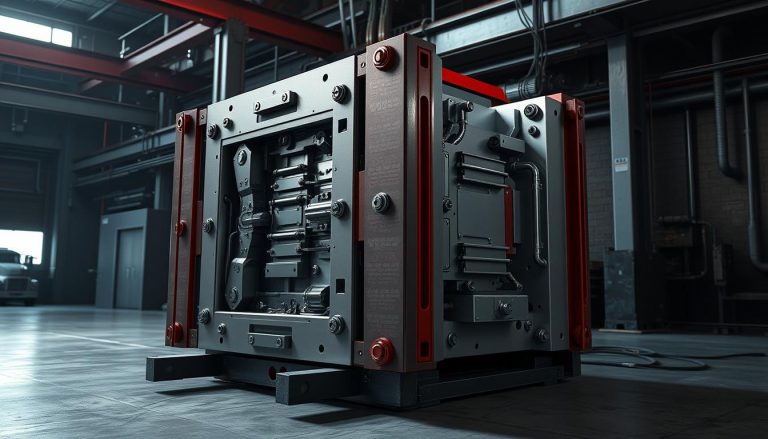In this article, we discover the world of high-precision small plastic parts. These are very important for medical technology and microelectronics. We use special manufacturing techniques to produce precise components.
These products meet the highest requirements. We explain why precision is so important in medical technology. These high-precision parts play a major role.
Important findings
- High-precision small plastic parts are essential for medical technology.
- The precision of these parts has a direct impact on patient safety.
- Our production techniques guarantee the highest quality.
- Similar standards are needed in microelectronics.
- The choice of material plays a decisive role in the properties of the parts.
- Quality controls ensure the longevity and functionality of the products.
Introduction to high-precision small plastic parts
High-precision miniature parts are indispensable in many areas today. They are revolutionizing plastics production in medicine and microelectronics. Thanks to high-quality materials and the latest technologies, we offer reliable and functional products.
The demand for these miniature parts is constantly increasing. They are known for their high precision and the fulfillment of specific customer requirements. Automation and computer production make the manufacturing process more efficient.
One particular advantage of plastics production is the ability to develop customized solutions. This flexibility makes high-precision miniature parts a standard in many technical projects.
High-precision micro parts improve the quality and functionality of many products. Companies that use these technologies are well prepared for future challenges and innovations.
The importance of precision in medical technology
Precision is very important in medical technology. It influences how well devices work. And it also has a major impact on patient safety.
If parts are not accurate, they can cause problems. This can lead to malfunctions. This is dangerous for patients. Therefore, all parts must be very precise.
Effect on patient safety
Patient safety is the most important thing in medical technology. If parts are not accurate, the risk of problems increases. For example, incorrect dosages in medication devices can cause harm.
With surgical instruments, inaccurate parts can disrupt the healing process. Precise parts reduce these risks. They ensure reliable and consistent performance.
Examples of precise applications
Some important applications in medical technology require precision:
- Surgical instruments require high precision for accurate procedures.
- Diagnostic technologies require precise measurements for correct diagnoses.
- Implants must fit and function precisely in order to protect the patient.
Medical technology companies are improving patient safety with high-precision small plastic parts. These innovations are important for successful treatment and the well-being of patients.
High-precision micro parts for medical technology and microelectronics
High-precision micro parts are very important in medical technology and microelectronics. They are necessary for systems to function well and be efficient. In medicine, for example, they are used in sensors for diagnostic devices and special holders for surgical instruments.
Every part has to be manufactured very precisely. This ensures a perfect fit and reliable performance.
These tiny parts are also very important in microelectronics. They are found in miniature components for electronic circuits. These are very important in modern communication devices and computers.
New technologies help us to manufacture these parts very precisely. This promotes the development of new devices and applications.
Materialien für hochpräzise Kunststoff-Kleinteile
The right materials are very important for the production of small plastic parts. Various plastics have special advantages. They are ideal for medical technology and microelectronics.
Types of plastics
The following plastics are particularly important for small parts:
- Polycarbonate: Its high impact resistance and thermal stability.
- ABS: Good mechanical properties and easy processing.
- PEEK: Its excellent chemical and temperature resistance.
Properties of the materials used
The choice of material depends on its properties. Important points are
- Temperature resistance: Ability to withstand different temperatures.
- Chemical resistance: Resistance to aggressive substances.
- Sterilizability: Necessary for applications in medical technology.
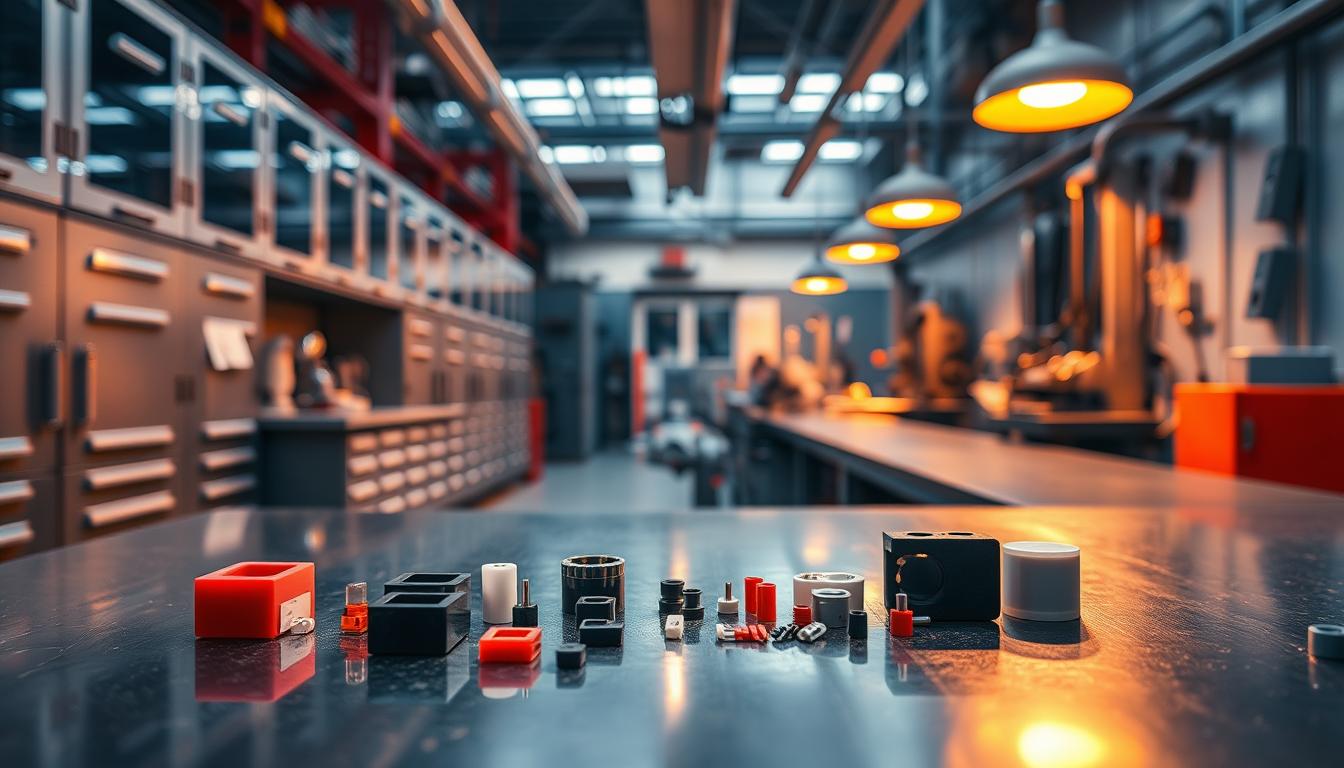
Production techniques for small plastic parts
There are various manufacturing techniques for small plastic parts. Injection molding, 3D printing and CNC machining are very common. Each process has its own strengths, which are used as required.
Injection molding is ideal for many parts with consistent quality. The CNC machining process, on the other hand, is suitable for complex shapes and a small number of parts.
Automation is very important today. It improves the efficiency and quality of small plastic parts. Modern technologies help to meet high industry standards.
The additive manufacturing process, such as 3D printing, makes it possible to build parts directly from digital models. This saves time and money. The choice of processes depends on the requirements and costs.
| Production technology | Advantages | Disadvantages |
|---|---|---|
| Injection | molding High efficiency, consistent quality | High investment costs |
| 3D printing | Flexibility, fast prototy ping | Lower production speed |
| CNC machining | Precision for complex geometries | Higher unit costs |
Quality control and test procedures
Ensuring the highest precision is very important. We use comprehensive quality control measures and innovative test procedures. This is how we ensure that every part meets the high requirements.
Methods for ensuring precision
The most important methods include
- 3D measurements to check the dimensional accuracy
- Visual inspections for the detection of surface defects
- Functional tests to ensure the performance of the parts
This combination of processes ensures that our products always meet the standards. Constant monitoring helps us to improve precision and optimize production processes.
Importance of quality certifications
Quality certifications such as ISO 13485 are very important in medical technology. These certifications set specific requirements for quality control and are crucial for the trust of our customers. They show that our manufacturing processes comply with international standards and offer the necessary quality and safety.
By adhering to these standards, we not only increase our credibility. We also provide a solid basis for future innovations and developments in the industry.
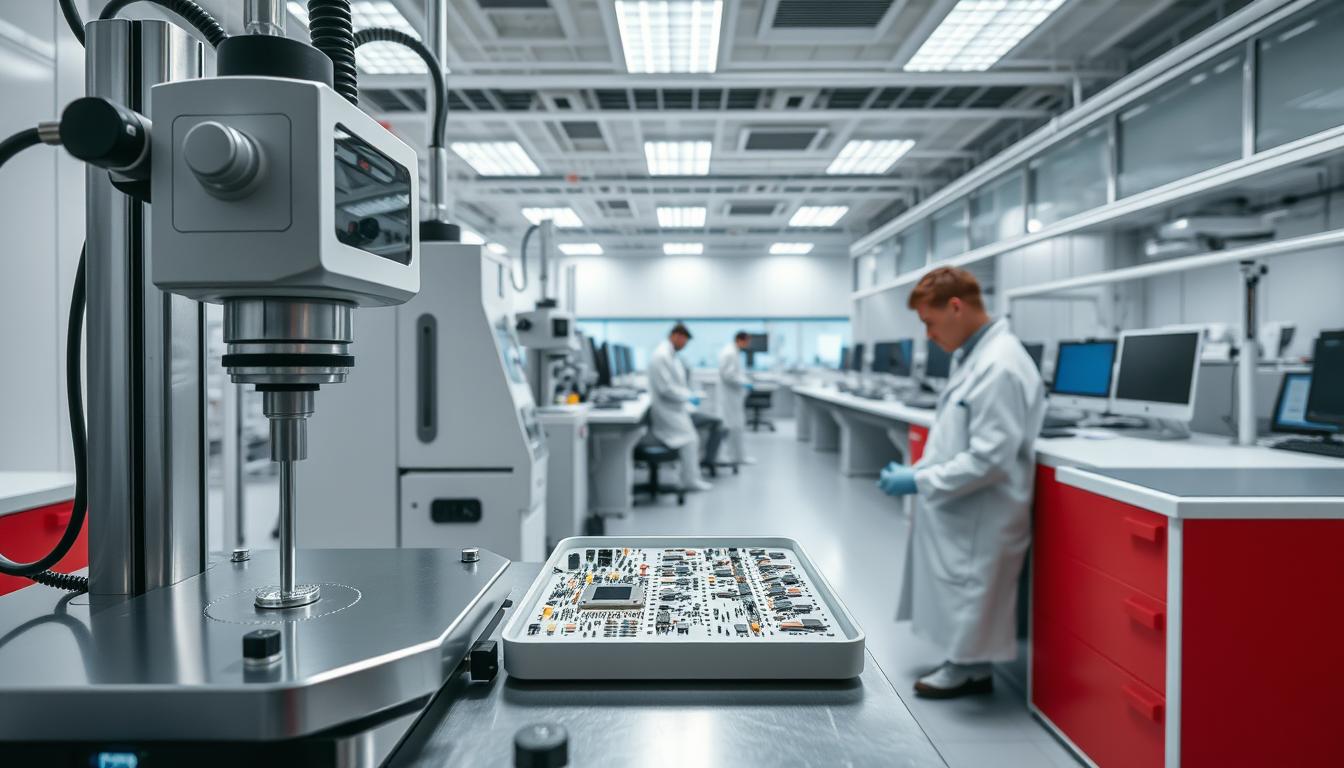
Areas of application in medical technology
Small plastic parts are very important in medical technology. They are used in many areas, from diagnostic devices to surgical instruments. These products are accurate and reliable, which is important for patient safety.
Examples of products
The innovative products include:
- Drip infusers that dose medication precisely.
- Blood testing devices that provide fast and accurate diagnoses.
- Surgical instruments for minimally invasive procedures.
Innovations and trends
Medical technology is constantly evolving. New technologies improve the efficiency and quality of products. Current developments include
- 3D-printed parts that are tailored to the patient’s needs.
- Smart materials that change under certain conditions.
- Improved manufacturing processes that save time and money.
Areas of application in microelectronics
Microelectronics is a key sector in which our small plastic parts are very important. In a world that wants more and more performance, high-precision parts are needed. These are used in many areas, such as smartphones, medical devices and industrial control systems.
Precision and reliability count in microelectronics. The parts must meet high quality standards in order to function well. New technologies and materials are driving innovation and expanding the areas of application.
We see important trends in microelectronics. Things like the Internet of Things (IoT) and intelligent systems are making the market dynamic. Our solutions must meet the increasing requirements.
FAQ
What materials are used for high-precision small plastic parts?
We use high-quality plastics such as polycarbonate, ABS and PEEK. These are ideal due to their mechanical properties, temperature resistance and chemical resistance.
How does your company ensure precision in the production of small parts?
Modern techniques such as injection molding, 3D printing and CNC machining ensure precision. We also carry out 3D measurements and functional tests to ensure quality.
What role does automation play in your production processes?
Automation increases efficiency and quality. Innovative technologies enable us to respond more quickly to customer requirements.
In which areas of medical technology are your products used?
Our small parts are used in medical technology. These include surgical instruments, diagnostic technologies and implants where high functionality and reliability are required.
What steps do you take to ensure quality?
We carry out comprehensive quality control and testing procedures. We adhere to ISO 13485 and conduct regular audits to exceed customer requirements.
What are the current trends in microelectronics that affect your products?
In microelectronics, the demand for high-precision components is increasing. These are necessary for critical applications such as in smartphones and medical devices.
How does the ordering process for your products work?
The ordering process is simple. Customers can upload their 3D file to our website. They then immediately receive a calculation of the production costs.



